Facelift
Facelift Specialist
Dr. Barry Eppley is a skilled plastic surgeon who is committed to helping his patients achieve the best possible results. His dedication to facial rejuvenation can be seen on his face lift photos page.
FACIAL AGING – A Progressive Process
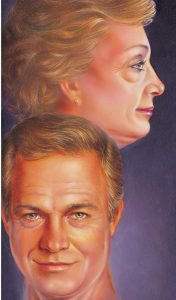 Early in life the face is full and firm due to tightness of the overlying skin and the fixed position of the underlying soft tissue which is attached to the facial bones and muscles. As we age the influences of gravity, facial expression, and the natural makeup of our tissues weakens the underlying tissue attachments and slowly stretches out the skin. This begins initially as wrinkling around the eyes and forehead but eventually progresses to looseness of skin (bags) around the eyes, jawline, and neck as well as deep creases along the nose, mouth, eyes, and cheeks. Smoking, excessive sun exposure, skin type and genetics can accelerate this natural aging process.
Early in life the face is full and firm due to tightness of the overlying skin and the fixed position of the underlying soft tissue which is attached to the facial bones and muscles. As we age the influences of gravity, facial expression, and the natural makeup of our tissues weakens the underlying tissue attachments and slowly stretches out the skin. This begins initially as wrinkling around the eyes and forehead but eventually progresses to looseness of skin (bags) around the eyes, jawline, and neck as well as deep creases along the nose, mouth, eyes, and cheeks. Smoking, excessive sun exposure, skin type and genetics can accelerate this natural aging process.
WHAT IS A FACELIFT?
Some of this natural aging process of the face can be reversed by the procedure currently known as a facelift or rhytidectomy. This procedure allows multiple layers of tissue to be removed and/or tightened along the lower face and neck and results in scars which are inconspicuous in and around the ears. When combined with many other plastic surgery procedures (e.g., eyelid/forehead surgery, liposuction, chin implant and rhinoplasty), remarkable improvements in one’s overall facial appearance can be achieved.
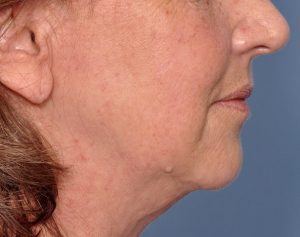
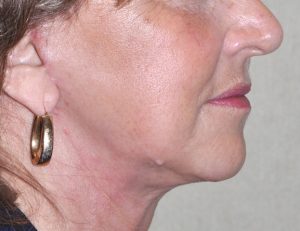 It is a procedure, however, that is often misunderstood by the public. A facelift improves the neck and jowl (along the jawline) areas mainly with limited effects on sagging tissues around the mouth. It does nothing for the aging appearance around the eyes, forehead and cheeks. These require separate procedures (blepharoplasty, browlift) which, while commonly done with a facelift to create an overall facial rejuvenation effect, are not necessarily part of the facelift portion of the facial rejuvenation procedure. Many types of facelifts are done in isolation without addressing the upper portions of the face.
It is a procedure, however, that is often misunderstood by the public. A facelift improves the neck and jowl (along the jawline) areas mainly with limited effects on sagging tissues around the mouth. It does nothing for the aging appearance around the eyes, forehead and cheeks. These require separate procedures (blepharoplasty, browlift) which, while commonly done with a facelift to create an overall facial rejuvenation effect, are not necessarily part of the facelift portion of the facial rejuvenation procedure. Many types of facelifts are done in isolation without addressing the upper portions of the face.
TYPES OF FACELIFTS
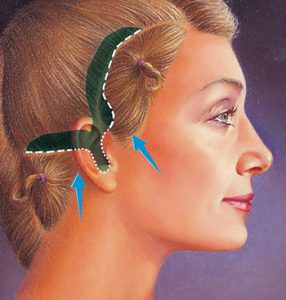 Facelifts, today, are tailored to the patient’s degree of facial aging, their concerns, and the age of the patient. Facelift surgery can be confusing because it has many different components to it. Where and how long are the incisions? Is liposuction used? Are muscles tightened? What in the world is this SMAS that I hear about? How much skin is removed and tightened? To some degree, albeit a bit simplistic, different facelift types are differentiated by the extent of the incisions in and around the ear.
Facelifts, today, are tailored to the patient’s degree of facial aging, their concerns, and the age of the patient. Facelift surgery can be confusing because it has many different components to it. Where and how long are the incisions? Is liposuction used? Are muscles tightened? What in the world is this SMAS that I hear about? How much skin is removed and tightened? To some degree, albeit a bit simplistic, different facelift types are differentiated by the extent of the incisions in and around the ear.
While it can be confusing, facelifts at their most basic level can be thought of as just three types, a full and a limited facelift and a direct neck lift.
Full Facelift
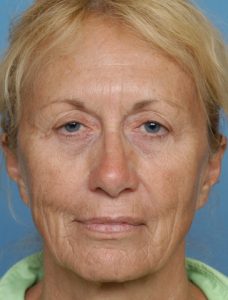
 A full facelift generally refers to doing the most neck and jawline tightening as possible. This type of facelift is needed when there is considerable neck sagging and jowling and almost always needs to be done in someone age 55 years or older. It uses incisions on both the front and back side of the ear, directly removes fat from the neck and jowls, tightens muscle in the center of the neck, creates extra facial tightening by SMAS imbrication or flap elevation and moves all the loose skin from the neck and jowls back towards the ear where it is removed. Many full facelifts are done in conjunction with other excisional facial rejuvenation procedures such as eyelid and brow lifts.
A full facelift generally refers to doing the most neck and jawline tightening as possible. This type of facelift is needed when there is considerable neck sagging and jowling and almost always needs to be done in someone age 55 years or older. It uses incisions on both the front and back side of the ear, directly removes fat from the neck and jowls, tightens muscle in the center of the neck, creates extra facial tightening by SMAS imbrication or flap elevation and moves all the loose skin from the neck and jowls back towards the ear where it is removed. Many full facelifts are done in conjunction with other excisional facial rejuvenation procedures such as eyelid and brow lifts.
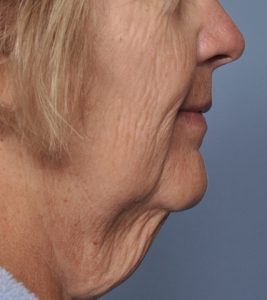
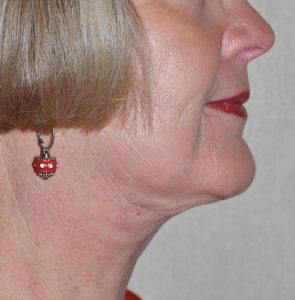 The full lower facelift offers the most improvement that can be obtained in the neck and jowl areas.
The full lower facelift offers the most improvement that can be obtained in the neck and jowl areas.
Limited (Short Scar) Facelifts
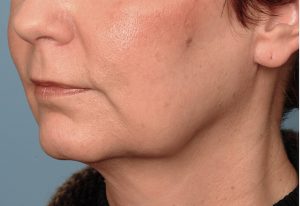
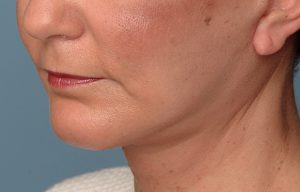 In a more limited facelift, the incision is largely just in front part of the ear and temporal hairline with some extension along the backside of the ear (although less so than in a full facelift). Liposuction may be done in the neck but platysma muscle tightening often isn’t. (But it can be done if needed) SMAS tightening the sides of the face is usually done by suture imbrication only. (although I prefer a flap elevation) The improvement with this ‘lesser’ facelift is primarily along the jawline and neck. As a result, it is best used in younger patients (generally under the age of 55 years old) who have early signs of aging such as jowling and a little loose neck skin or for those patients who simply do not want a bigger operation and recovery.
In a more limited facelift, the incision is largely just in front part of the ear and temporal hairline with some extension along the backside of the ear (although less so than in a full facelift). Liposuction may be done in the neck but platysma muscle tightening often isn’t. (But it can be done if needed) SMAS tightening the sides of the face is usually done by suture imbrication only. (although I prefer a flap elevation) The improvement with this ‘lesser’ facelift is primarily along the jawline and neck. As a result, it is best used in younger patients (generally under the age of 55 years old) who have early signs of aging such as jowling and a little loose neck skin or for those patients who simply do not want a bigger operation and recovery.
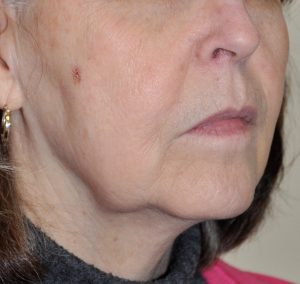
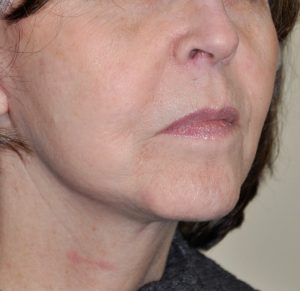 What makes these limited facelifts confusing is that they go by a lot of different names, such as short scar facelift, partial facelift, mini-facelift, Quicklift, and Lifestyle Lift to name a few. Because it is not a full facelift, it does take less operative time to perform and has a faster recovery… hence many of the popular names ascribed to it.
What makes these limited facelifts confusing is that they go by a lot of different names, such as short scar facelift, partial facelift, mini-facelift, Quicklift, and Lifestyle Lift to name a few. Because it is not a full facelift, it does take less operative time to perform and has a faster recovery… hence many of the popular names ascribed to it.
Direct Neck Lift
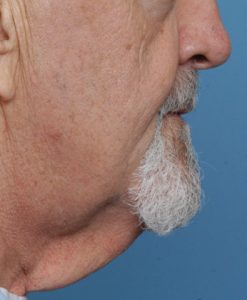
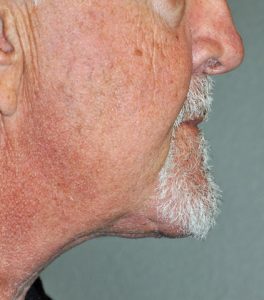 The more uncommon form of a ‘facelift’ that is designed specifically to deal with neck wattles is that of the direct neck lift. As the name describes it removes the neck wattle directly without using incisions around the ears. Instead a midline neck incision is used. This it is not a true facelift. It is tremendously effective and can make a sharp neck angle that not even a traditional facelift can notachieve. But it does leave a fine line vertical neck scar which, in older men with beard skin who are usually the main type of patient for this procedure, it can scar quite well.
The more uncommon form of a ‘facelift’ that is designed specifically to deal with neck wattles is that of the direct neck lift. As the name describes it removes the neck wattle directly without using incisions around the ears. Instead a midline neck incision is used. This it is not a true facelift. It is tremendously effective and can make a sharp neck angle that not even a traditional facelift can notachieve. But it does leave a fine line vertical neck scar which, in older men with beard skin who are usually the main type of patient for this procedure, it can scar quite well.
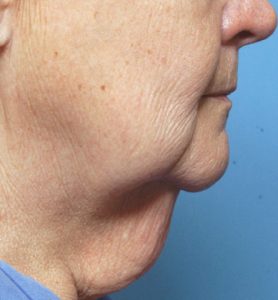
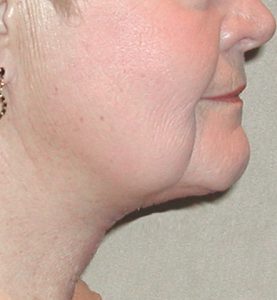 While most direct neck lifts are done in men who can tolerate a midline neck scar due to their beard skin’s ability to heal so well, it can also be done in women. I consider the neckline scar less favorable in women but in the properly motivated patient the neck shape change can be significant. Just like men there may be compelling reasons to choose a direct necklift over a traditional lower facelift such as medical and cost reasons.
While most direct neck lifts are done in men who can tolerate a midline neck scar due to their beard skin’s ability to heal so well, it can also be done in women. I consider the neckline scar less favorable in women but in the properly motivated patient the neck shape change can be significant. Just like men there may be compelling reasons to choose a direct necklift over a traditional lower facelift such as medical and cost reasons.
WILL MY FACELIFT LOOK NATURAL?
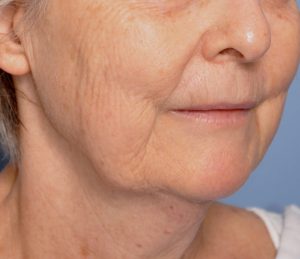
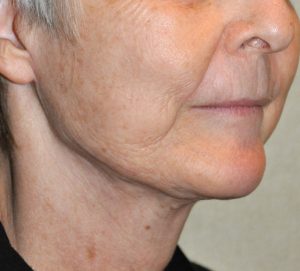 One of the most common concerns for someone considering a facelift is that they will look unnatural. While the definition of what a natural facelift result looks like is open to interpretation, no one wants to look overpulled or have an unnatural facial appearance. While an extensive facial rejuvenation procedure can look a little ‘surgical’ in the beginning, almost all patients settle into a natural look very quickly after surgery. With the more limited types of facelifts, there are no concerns about having an unnatural results as, by definition, these are more limited facial procedures. The concern with them is the opposite for the more full facelift patient… will they do enough to make a visible difference and fully satisfy the patient.
One of the most common concerns for someone considering a facelift is that they will look unnatural. While the definition of what a natural facelift result looks like is open to interpretation, no one wants to look overpulled or have an unnatural facial appearance. While an extensive facial rejuvenation procedure can look a little ‘surgical’ in the beginning, almost all patients settle into a natural look very quickly after surgery. With the more limited types of facelifts, there are no concerns about having an unnatural results as, by definition, these are more limited facial procedures. The concern with them is the opposite for the more full facelift patient… will they do enough to make a visible difference and fully satisfy the patient.
ADJUNCTIVE FACELIFT PROCEDURES (Chin Implants, Laser Resurfacing)
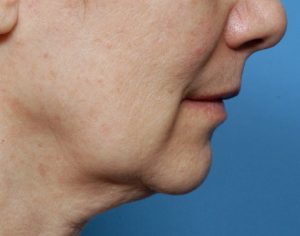
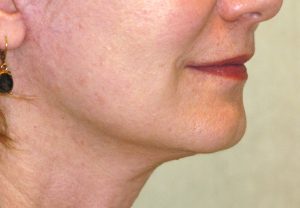 There are numerous options of adding procedures as part of a facelift procedure that will enhance the result. The most common are chin augmentation and skin resurfacing (laser vs. chemical peel). For those patients with a naturally weaker chin, extending the jawline a bit by a chin implant can help improve the appearance of the jawline and the neck angle. Because a facelift does not affect the tissues around the mouth area, laser resurfacing is often done concurrently to soften vertical lip lines and improve the texture of the chin skin.
There are numerous options of adding procedures as part of a facelift procedure that will enhance the result. The most common are chin augmentation and skin resurfacing (laser vs. chemical peel). For those patients with a naturally weaker chin, extending the jawline a bit by a chin implant can help improve the appearance of the jawline and the neck angle. Because a facelift does not affect the tissues around the mouth area, laser resurfacing is often done concurrently to soften vertical lip lines and improve the texture of the chin skin.
Indianapolis plastic surgeon, Dr. Barry Eppley, performs other facial rejuvenation procedures, including neck contouring and lip enhancement. For rhinoplasty patients desiring a shapelier nose, he performs nasal surgery. For patients who do not desire a surgical procedure, he offers Botox and a selection of injectable fillers.
HOW LONG DOES A FACELIFT LAST?
This is a common question as most people suspect that a facelift does not create a permanent result. That is a correct assumption as facelift surgery treats the symptoms of facial aging but does not treat or cure the cause of facial aging. How the aging process affects the results of facelift surgery depends on many factors such as patient age at the time of surgery, what type of facelift surgery was done, patient lifestyle and environmental exposures, quality/thickness of their tissues and the patient’s natural genetics. Technically the effects of aging start to degrade a facelift with six to twelve months after the surgery. But real noticeable differences usually take years to see with many patients experiencing favorable facial improvements for up to ten years after the surgery.
Because facelift surgery is not permanent, many patients undergo secondary facelift procedures to maintain their results. This are often less significant than the first surgery and often can be aptly described as ‘nips and tucks’. When this is done this after a first facelift depends on the patient’s sensitivity to ongoing aging changes and how maintained they wish to keep the result. Secondary procedures such a Botox, laser resurfacing and skin tightening devices can help maintain facelift results.
IS A THREADIFT LIKE A FACELIFT?
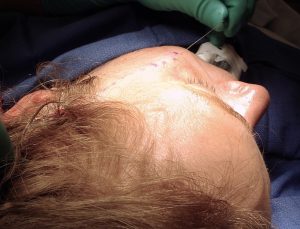 The threadlift is a type of minimally invasive ‘facelifting’ procedure that is usually done under local anesthesia. The concept is not new has been around for almost two decades. It is based on passing specially designed sutures that engage the tissues (often called barbed sutures) under the skin for the cheeks, jowls and neck areas and allows a slight lift to occur when they are tightened. While this tissue lifting concept has its appeal compared to traditional facelift surgery, the two should not be confused in terms of effectiveness or comparative results. Like many minimal invasive procedures the results are equally minimal and have a very short persistence. Threadlifts have been shown to typically last less than a year and have a not insignificant rate of suture-related complications. The sutures can also be very difficult to remove later if needed. While typically indicated for the earliest signs of of facial aging, it is hard to endorse their use based on the quality and persistence of their effects.
The threadlift is a type of minimally invasive ‘facelifting’ procedure that is usually done under local anesthesia. The concept is not new has been around for almost two decades. It is based on passing specially designed sutures that engage the tissues (often called barbed sutures) under the skin for the cheeks, jowls and neck areas and allows a slight lift to occur when they are tightened. While this tissue lifting concept has its appeal compared to traditional facelift surgery, the two should not be confused in terms of effectiveness or comparative results. Like many minimal invasive procedures the results are equally minimal and have a very short persistence. Threadlifts have been shown to typically last less than a year and have a not insignificant rate of suture-related complications. The sutures can also be very difficult to remove later if needed. While typically indicated for the earliest signs of of facial aging, it is hard to endorse their use based on the quality and persistence of their effects.
WHAT IS A LIQUID FACELIFT?
The so called liquid facelift procedure should not be confused with a facelift at all. At least not in the traditional sense of what a surgical facelift does and how it does it. As the name implies a liquid facelift is about adding liquid to the face in the form of injectable materials such as synthetic fillers, fat and/or blood products such as PRP. (platelet-rich plasma) By adding volume it pushes out the tissues making them more full. By so doing it may create a bit of a ‘lift’ in the cheek and lateral facial areas. In the right patient who needs volume in the cheeks and is early on in the aging process these injections may provide some rejuvenative effects. Often they are combined with topical skin treatments such as microneedling, chemical peels and laser resurfacing for their synergistic skin enhancing benefits. While this treatment approach has a role in facial aging in the properly selected patient it should be called Liquid Facial Rejuvenation as it bears little similarity to how a surgical facelift is performed or the effect it creates.
Before Facelift Surgery
The most important part of the initial consultation is to determine what is the best type of facelift procedure (limited vs. full) is needed and what other facial procedures (e.g., eyes) may complement the overall facial result. It is important to balance how much improvement a patient wants with what they are willing to go through to get that result (recovery and cost). The location of the incisions around the ears and into the hairline are reviewed as well as whether other procedures (e.g., eyelids, forehead, facial implants, etc.) are advised at the same time.
The avoidance of certain medications prior to surgery are especially important for the facelift procedure. Any drugs which contain aspirin should be avoided for at least two weeks prior to surgery so that excessive bleeding during and after surgery does not occur. In addition, the abstinence from smoking (cigarettes and cigars) for two to four weeks prior to surgery is a near must so that skin healing is not impaired.
The Facelift Operation
Facelift surgery is performed as an outpatient in a surgery center. If the patient undergoes other concomitant procedures with a facelift, such as eyelid/brow or body procedures, it may be necessary to medically monitor and care for the patient in the facility overnight. Anesthesia may be either general or sedation dependent upon patient and surgeon preference as well as the extent of the procedure. With the surgeon working on one side of the face at a time, the incision usually extends from within the hair in the temple region, around the ear and under the earlobe, and up into the hairline at the back of the neck. (Full Facelift) The skin is then undermined towards the nose and mouth and into the neck. A small incision underneath the chin may also be used to free up the skin from the middle portion of the neck as well as tighten the neck muscles and remove fat. On the side of the face under the raised skin, a layer of tissue that sits on top of the muscles, known as the SMAS, is lifted upward to create a better facelift result and provide better long-term support. The face and neck skin is then pulled back and the excess removed around the ears. Dissolvable sutures are used in all areas. In fuller facelifts, drains will be placed that exit out from behind the ears. A dressing that encircles the head and face is then loosely applied. The facelift procedure usually takes from two to three hours and will be longer if other procedures are performed at the same time.
A contemporary alternative to a full facelift is the Limited or Short Scar Facelift. This differs from the full facelift by using less long incisions, usually limited to just the front of the ear, and less tissue dissection. It is more rapid to perform with less recovery time. It is indicated when jowling is the main problem and the neck has little sag.
Recovering After Facelift Surgery
The facelift procedure is usually done as an outpatient and the patient is sent home after adequately recovering from the anesthetic. The patient is asked to return the following day and the bandages and drains if used are removed to check for proper skin healing and that no bleeding has occurred underneath the skin flaps. An elastic supportive strap is then worn for another week to ten days. Since dissolvable sutures are used, no suture removal is needed. Expect modest Swelling and some bruising which will be mostly gone in 7 to 10 days for shorter scar facelifts and up to three weeks for full facelifts. Numbness of the face and neck skin is typical and will usually recover normal feeling within three to six months after surgery. Patients should avoid strenuous exercise and sun exposure for four to six weeks after surgery.
The final result after a facelift may not be apparent for several weeks after surgery until all bruising and swelling have disappeared. Complications from the procedure are uncommon but excessive bleeding (hematoma) and delayed healing of the skin incisions are the most common, particularly in smokers, and may require further surgery. Injury to the lower branch of the facial nerve, which is responsible for downward movement of the lower lip, is very uncommon and rarely permanent even if it does occur.

North Meridian Medical Building
Address:
12188-A North Meridian St.
Suite 310
Carmel, IN 46032
Contact Us:
Phone: (317) 706-4444
WhatsApp: (317) 941-8237
